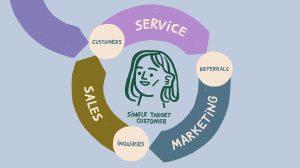Written by Daniela Furtado
After lots of trial and error, we figured out a social media process that works for us. But we still won’t continue to use it. Read more for a behind-the-scenes look and all the lessons we’ve learned along the way.
I have a love-hate relationship with social media.
As a business, it’s a creative way for us to reach our target customers, network our way to land press and partnerships, and yes, even make sales.
However, the mysterious algorithms, topical nature and saturated social media platforms can make it difficult to turn followers into customers and see a return on all the time and money invested in creating social media content.
Over the past couple of years, we’ve been fairly active and consistent on social media as we’ve experimented with different platforms, types of content and strategies.
In May 2021, I decided to shake it up.
We finally started to crack the code and make strides on social media, specifically LinkedIn. We were posting less on social media yet our content was consistently turning social media followers into sales inquiries.
From our experience, we’ve learned that when we narrow down our strategy, create a rinse-and-repeat process and adjust our expectations (read: lower them), social media isn’t so bad.
Inspired by Anfisa, in this blog post I’ll give you a behind-the-scenes look at our social media content creation process. Although the experiment came with a lot of learning, I’ll explain why it wasn’t fruitful enough for us to continue using social media as our primary marketing channel.
Jump Ahead
- About Our Digital Marketing
- Before May 2021
- Our Social Media Goals
- After May 2021
- Our Social Media Content Creation Process
- Lessons Learned
- What’s Next?
About Our Digital Marketing
We’re a search engine marketing agency. In other words, we help our clients get sales from search engines like Google. Most of our clients are in the cannabis or interior design industries. Our services include copywriting, content creation, SEO, Google Ads and PR (backlinks). We do not do email or social media marketing.
How do we get clients?
I get about 1 to 3 inquiries a week and they come from these channels, in this order:
- Referrals
When it comes to Google, we have created content and built backlinks to help us rank top 3 for keywords related to SEO and Google Ads for cannabis and interior design businesses. We invest most of our marketing resources into SEO. It’s one of our highest converting channels (duh … it’s what we do professionally!)

As for LinkedIn, we have built an audience of cannabis business owners and marketers. We understand that not everyone is searching for our services using keywords like “cannabis SEO” but we do know that our target customers are spending time on LinkedIn. In times of corona, LinkedIn helps us network when industry events aren’t available.
Before May 2021
From when the agency launched in May 2020 up until May 2021, I was trying to figure out how social media fits in with our overall marketing strategy. These were some of the questions I was trying to answer:
- Which channels are our target customers using?
- What’s their level of understanding of digital marketing? What industry language should we stay away from? How can we speak their language?
- What are their digital marketing challenges and goals?
- What kind of content are they most interested in when it comes to search engine marketing?
- How do they prefer to consume the content?
- Who else is creating content about search engine marketing on social media? How can we differentiate ourselves from them?
I was posting 3 to 5 times a week on Facebook, Instagram and LinkedIn, and experimented with all different types of content including graphs, quotes, interviews, short video clips, carousels and even live video workshops.
Our following was growing organically at a slow pace, with 5 to 10 new followers a week and our engagement rate was high at about 20% but our followers were translating into very few sales considering how much effort I was putting into it.
What’s more, is that I was doing it all on my own – the strategy, writing the copy and designing the visuals. It was taking me hours and the design was rudimentary.
The problem? I was creating general content about SEO. I was afraid to niche down and speak specifically to our target customers in the cannabis and/or design industry.
Our Social Media Goals
The plan was to shake up our social media approach. For 3 months, from May to July 2021, I wanted to challenge ourselves to niche down and build an audience specifically within the cannabis industry.
The short-term goal wasn’t to close sales, it was to build brand awareness. Simply put, I wanted as many people in the cannabis industry to get familiar with our name and build a virtual rapport with us.
I wanted our target customers, competitors and media outlets to see us, our expertise in cannabis marketing and think “Who are they? They know their sh*t.”
Although we don’t claim to be experts in social media and definitely don’t offer it as a service, we are a digital marketing agency. It’s important to me that we “walk the talk” as digital marketers by having a strong overall online presence.
After May 2021
The priority was to simplify the strategy and process as much as possible.
- Publish less and better quality content. I went from posting 3-5 times a week to 1-2 times.
- Focus on fewer platforms. I ditched Facebook and the email newsletters altogether and focused all my efforts on LinkedIn. Occasionally we cross-post on Instagram however posts about cannabis often get censored.
- Speak strictly to the cannabis industry. I went from sharing general SEO strategies to ones that are very unique to the cannabis industry, like the loophole to Google Ads, the common mistakes with age gates, the challenges of keyword research for cannabis and psychedelics and so on.
- Outsource the time-consuming aspects. Although I appreciate good design, I’m no graphic designer. I hired Shiva Moin to help turn my copy into visual stories. We also worked together to create templates and a standardized process.
Within 3 months, our social media presence on LinkedIn more than doubled from 600 followers to 1,400. Although sales weren’t my goal, I got about 1 sales call every week booked on my calendar from LinkedIn. The quality of the leads weren’t great however. Many impulsively booked a call after seeing my content and had budgets so low, I had to turn most of them away.
Our Social Media Content Creation Process
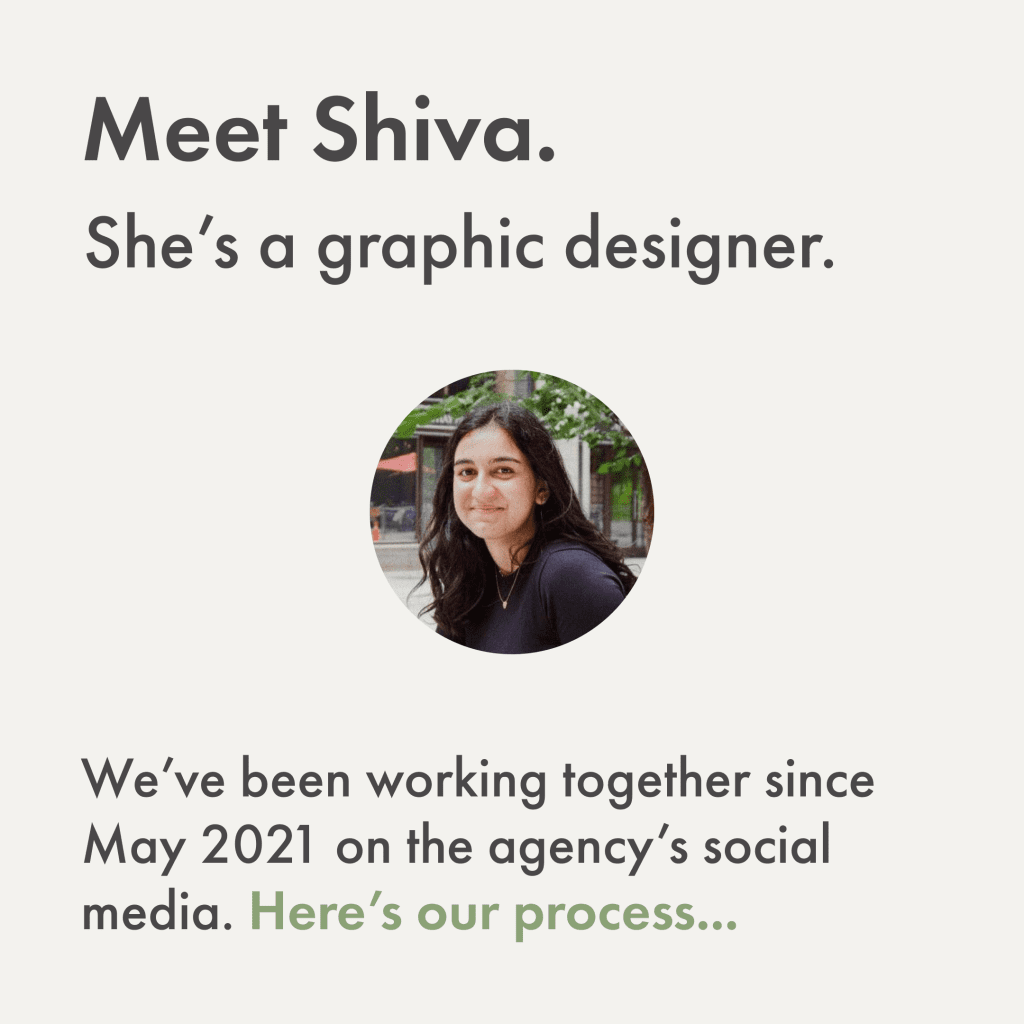
- Create a style guide and templates. Before we even started, I created a style guide to help Shiva create templates that were on-brand and easy for her to use going forward.
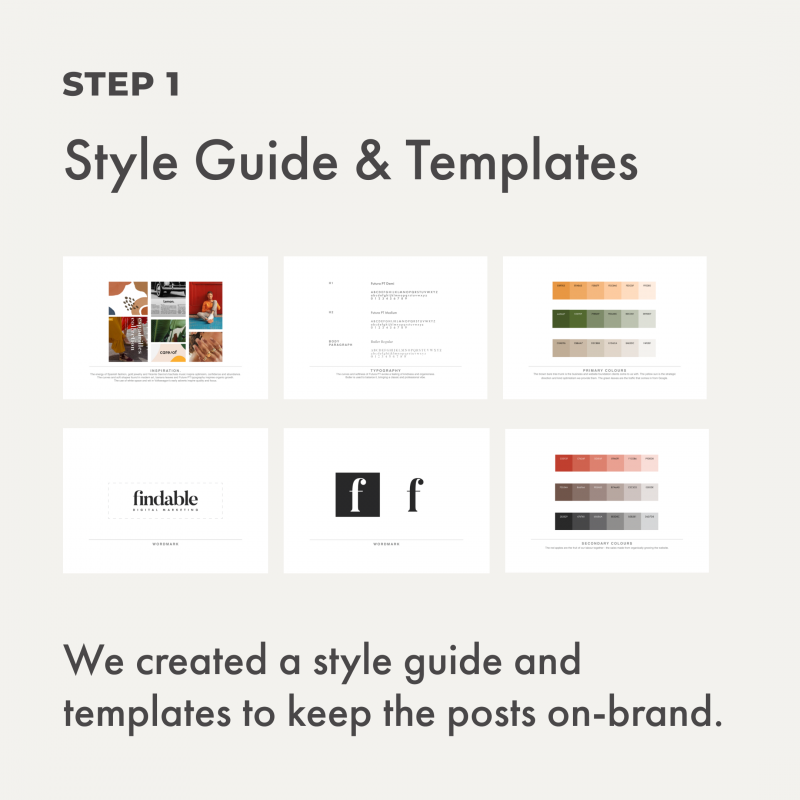
2. Write copy. Using Notion, I write the copy for all the social media posts of the month in advance.
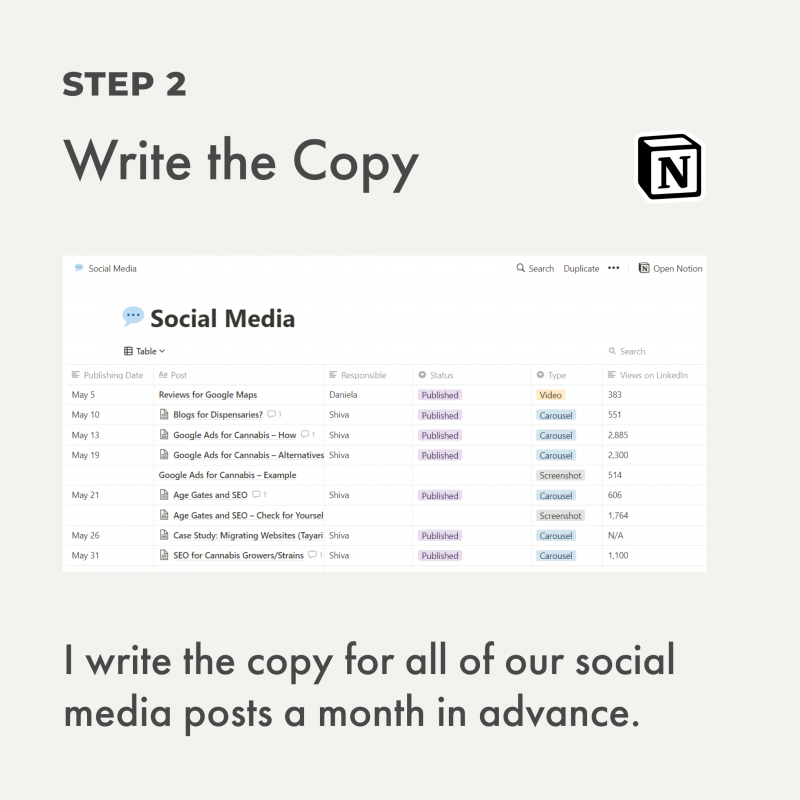
3. Design the posts. Shiva does her magic! She finds a way to turn the copy into visuals. Sometimes she chops up the copy a bit or rearranges it. Sometimes she makes it a full 10-slide carousel, sometimes just 1 infographic does the trick. I trust her to find a way to visually tell a story and get the message across.
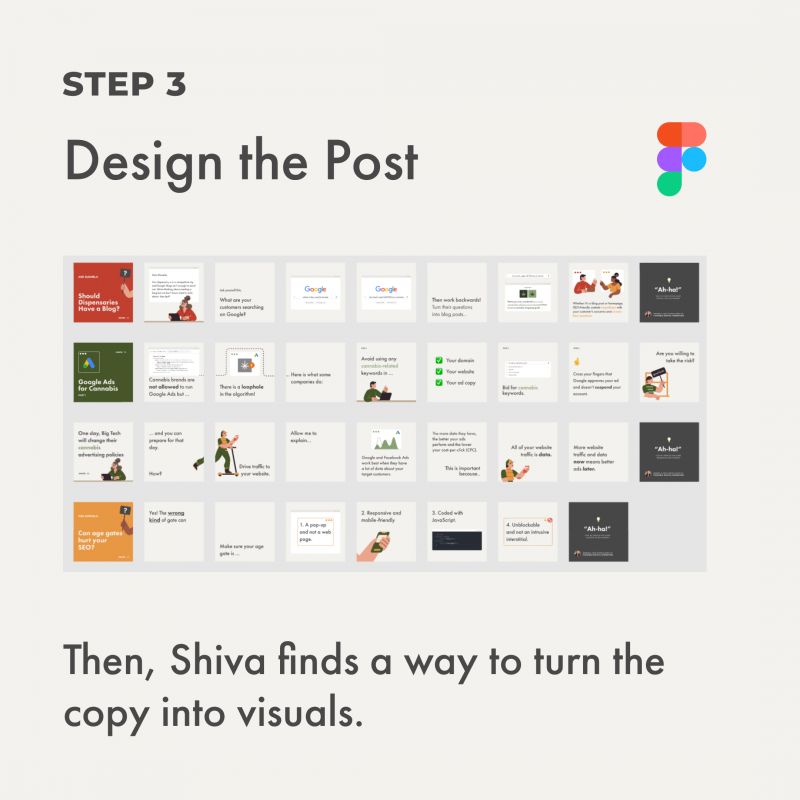
4. Make revisions. Using Figma, we can share feedback very easily. We go through 1 set of revisions before Shiva exports the designs and uploads it to Google Drive.
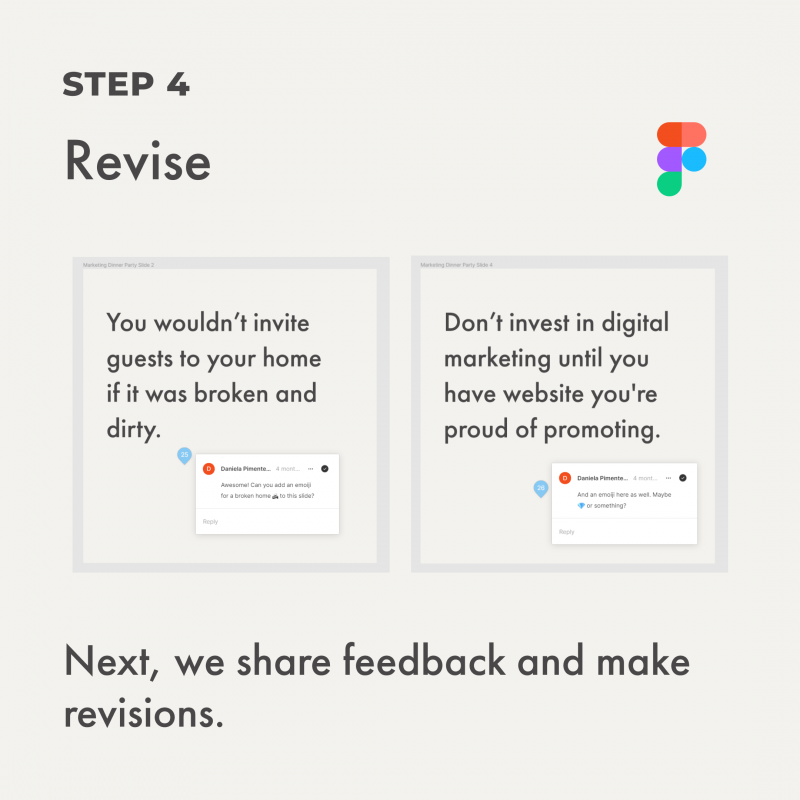
5. Hit publish. Once the designs are on Google Drive, I upload it manually to LinkedIn on the scheduled day. Yes, I know. Wouldn’t it be smart to automate this? Absolutely, unfortunately, there are no tools that allow carousels in LinkedIn to be scheduled in advance.
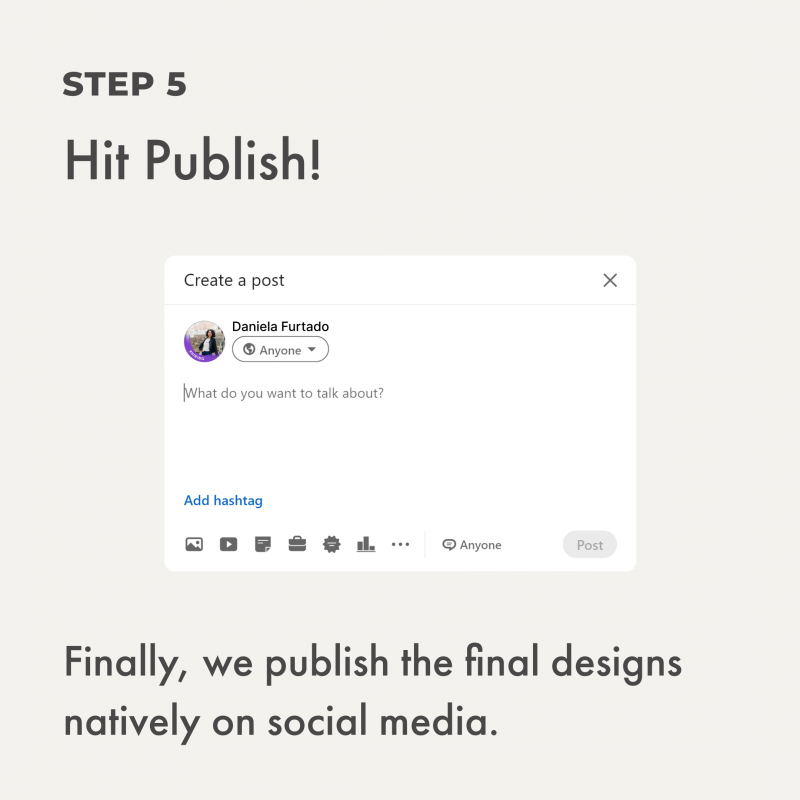
6. Track the metrics. At the end of the month, I track the reach. I try to look for patterns of what works, what topics people are most interested in and what formats are most popular. This helps guide us when creating content the following month. Sometimes we turn social media posts into blog posts (ex. this one on cannabis ads) or leverage it for PR (ex. we were featured in ADCANN, Four PM and MJBiz).
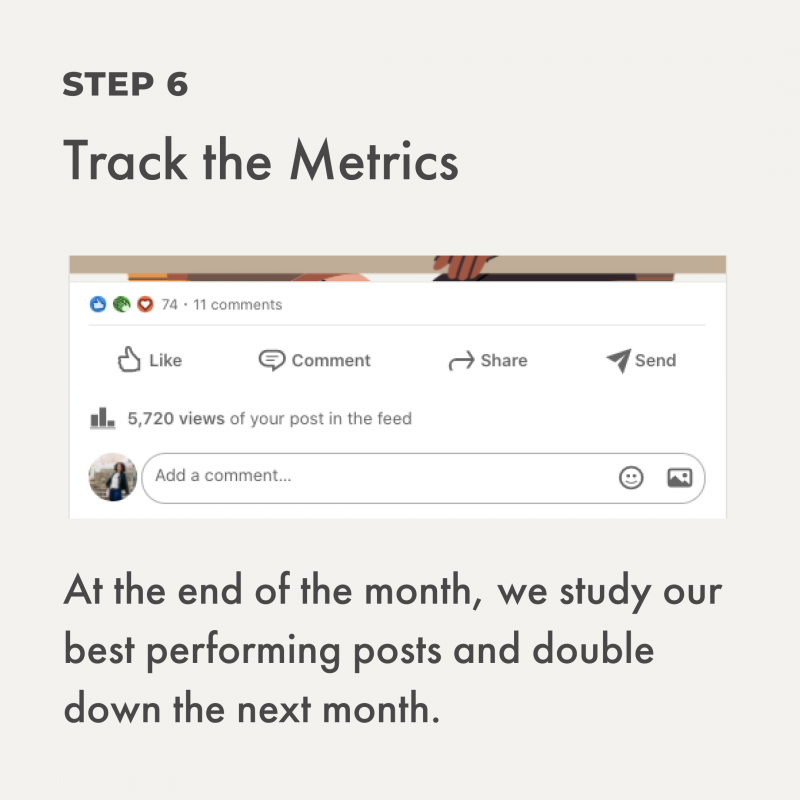
Lessons Learned
- Good work starts with clear direction. I learn this lesson every time I delegate a task. The designer’s work is as good as my feedback, direction and structure. If I don’t have a clear idea of what I want and communicate it clearly, how the hell can I expect them to know?
- Don’t lecture, tell stories. Everyone can barf tips, how-tos and advice but they’re a lot more memorable if we can turn them into stories. We find the more visual, simple and character the story has, the better.
- Don’t plan too far in advance. Although it’s tempting to crank out a content calendar 3 months in advance, social media is so topical and content that speaks to current trends do well.
- The story is more important than the medium. We do a mix of photos, carousels, videos and text. I don’t see one medium do consistently better than others, it depends on the topic and storytelling. At least, on LinkedIn.
- Keep expectations low for social media. It’s become more and more crowded. It requires a lot of effort and creativity to stand out to see an ROI.
Tips on productivity (to-do wall) or controversial marketing opinions (cannabis ads and meta descriptions) get the most reach/engagement.
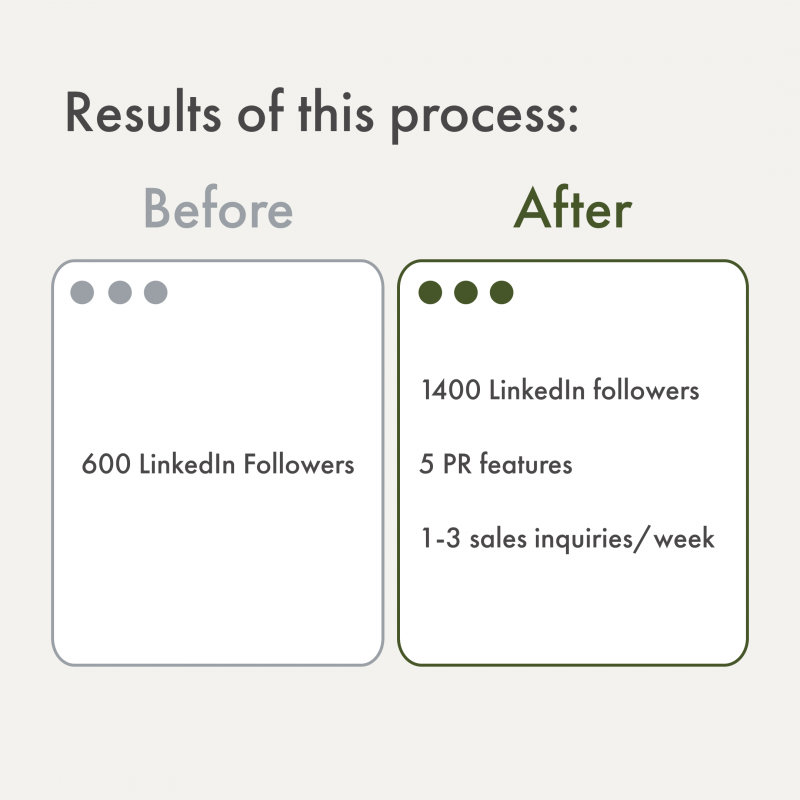
Will We Continue?
Frankly, no. We learned a lot about copywriting, storytelling and the psychology of influence from the process however we get widely more traffic and higher quality inquiries from Google with a fraction of the effort. Instead, we’ll continue to work on our website’s SEO including publishing case studies and blog posts, as well as building backlinks with digital PR.
Daniela Furtado
Daniela Furtado is a consultant, writer and speaker on how to make businesses easy to find online. She is the founder and CEO of Findable Digital Marketing. Off the clock, she enjoys cooking, dancing, and drawing. She is based in Toronto, Canada.
 3 Years and 3 Lessons on the Business of Expertise
3 Years and 3 Lessons on the Business of Expertise